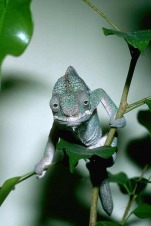lizards

I LOVE lizards! They are the best animals i think. They can bite, they can let you hold them. It all depends on how good you take care of them. That lizard is a chamelion. Chamelions can change colors to blend in when danger is near! The family Chamaeleonidae are a distinctive and highly specialized clade of lizards. They are distinguished by their parrot-like zygodactylous feet, their separately mobile and stereoscopic eyes, their very long, highly modified, and rapidly extrudable tongues, their swaying gait, and the possession by many of a prehensile tail, crests or horns on their distinctively shaped heads, and the ability of some to change color. Uniquely adapted for climbing and visual hunting, the approximately 160 species of chameleon range from Africa, Madagascar, Spain and Portugal, across south Asia, to Sri Lanka, have been introduced to Hawaii and California, and are found in warm habitats that vary from rain forest to desert conditions.
Frogs

This is a poison dart frog. They are very poionous! The poison is on the skin and inside it! The most poisonous dart frog is the golden dart frog! They are so poisonous that you can rub them on an arrow head and kill an animal with that arrow head! you don't want to mess with that frog.Poison dart frog (also dart-poison frog, poison frog or formerly poison arrow frog) is the common name of a group of frogs in the family Dendrobatidae which are native to Central and South America. Unlike most frogs, these species are active during the day and often exhibit brightly-colored bodies. Although all dendrobatids are at least somewhat toxic in the wild, levels of toxicity vary considerably from one species to the next, and from one population to another. Many species are critically endangered. These amphibians are often called "dart frogs" due to indigenous Amerindians' use of their toxic secretions to poison the tips of blowdarts. In fact, of over 175 species, only three have been documented as being used for this purpose (curare plants are more commonly used), and none come from the Dendrobates genus, which is most characterized by the brilliant color and complex patterns of its members.


